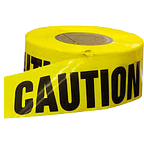Just Hangin’ Out: Why Do Firefighters Just Stand Around at Fires?
If you’ve been at the scene of a building on fire, then it’s likely you’ve witnessed firefighters just standing around. Why is that? Inside the yellow tape, firefighters perform all sorts of coordinated tasks from trying to put out the fire, to climbing on the roof and cutting a hole to allow hot gases to escape, to searching for victims, all working to achieve the same goal: rescue people and save property from being destroyed by fire. The rescue of civilians is the highest priority, with all strategies supporting that one objective. But sometimes, those outside the yellow tape might encounter a strange sight: A group of firefighters just standing around.
Admittedly, this appears odd, yet the firefighters loitering in front of the fire carryout a critical function: they stand by outside the fire to rescue firefighters working inside who become disabled, lost, or trapped. These firefighters, called the Rapid Intervention Team (RIT), follow procedures mandated by the Occupational Safety and Health Administration (OSHA).
Look closer at the RIT and you’ll see them holding tools like search ropes, axes, and a tool called the Scott Pak-Tracker. This electronic device uses a radio signal that can locate downed firefighters based on the location of their Self-Contained Breathing Apparatus (SCBA).
Another technological innovation within the fire service is the Thermal Imaging Camera (TIC), which is used to “see” through the smoke, leveraging the infrared wavelength of light. A TIC is looking for the body heat emitted from firefighters in order to find them faster in a low-visibility atmosphere. An additional tool that is growing in popularity for RITs is a battery-powered “jaws of life” by Hurst tools, which is able to cut through most metals and high tensile-strength steel. You can watch a video from Hurst here: http://www.jawsoflife.com/en/product/edraulic-s700e2-cutter.
Some fire departments also have “RIT bags” containing various tools and long air hoses attached to an air bottle. This proves useful if a firefighter is trapped under debris in a toxic environment, and needs a fresh supply of air. Toxic atmospheres require the use of air bottles that firefighters wear in hot, smoke-filled environments, known as a SCBA, seen below. A RIT can attach this air hose to the trapped firefighter’s SCBA to extend the air supply while they are being rescued.
The RIT strategically locates and “stages” outside at a point of entry allowing quick access to where the firefighters are working on the interior. Such close proximity to the point-of-entry affords the RIT quick access to the structure. In addition, the RIT monitors fireground communications via radios and mayday signals from SCBAs. The RIT dedicates a member to each radio frequency in use to listen for calls of help, called a “mayday,” or to receive instructions to begin a rescue.
Fire scenes are extremely dangerous and dynamic situations; conditions can deteriorate in seconds. Firefighters don’t just stand around, they all have very important roles. The RIT is focused on the safety of those in the greatest danger and provides the interior firefighters a sense of security that help is ready and waiting.
This article was written by Lt. Charles Cavnor (Dallas Fire and Rescue), a member of Inside the Yellow Tape. Thanks for joining Inside the Yellow Tape’s reveal of Rapid Intervention Teams. Check back soon as we peel back the curtains of another public safety mystery.
